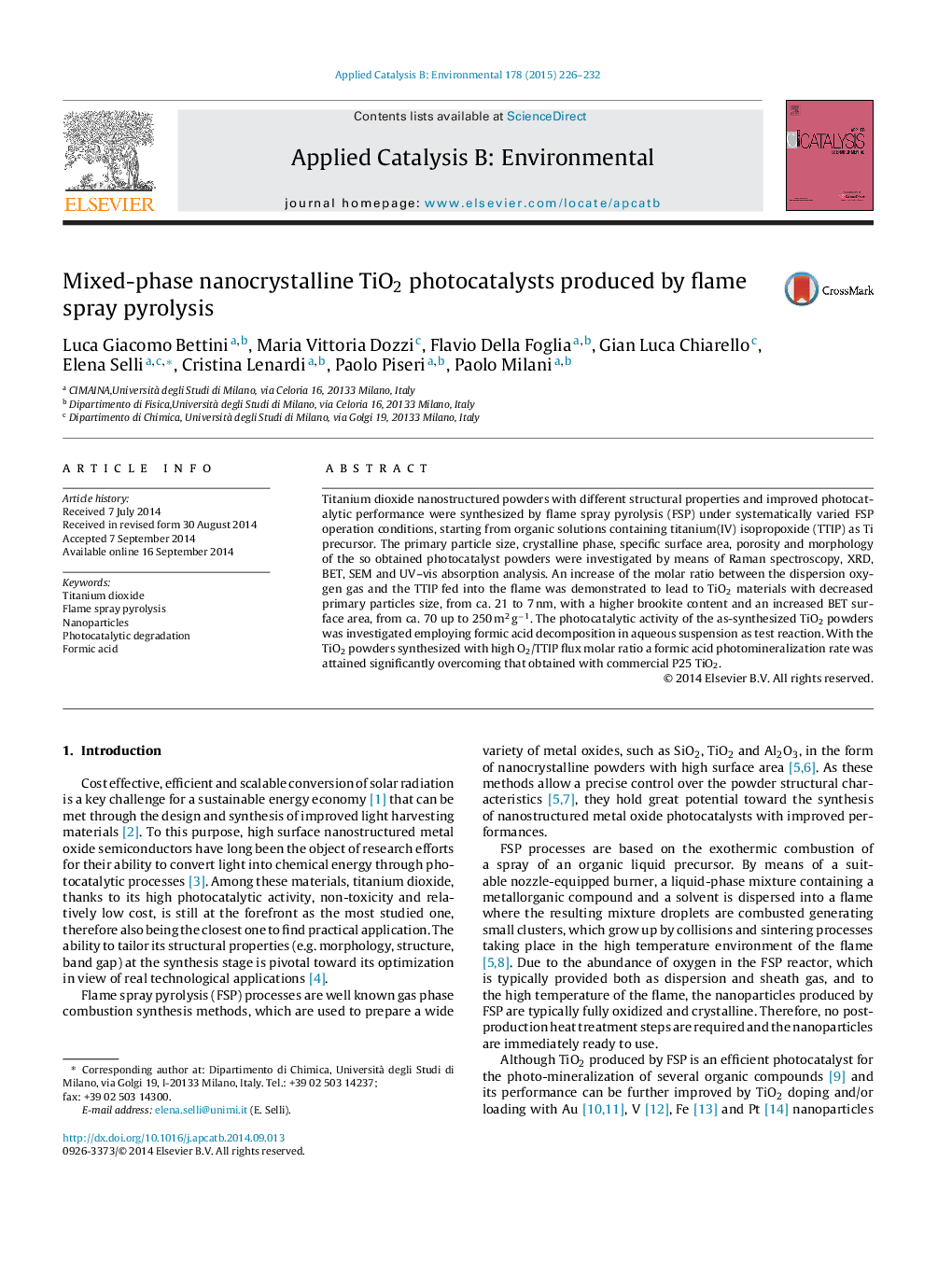| Article ID | Journal | Published Year | Pages | File Type |
|---|---|---|---|---|
| 44963 | Applied Catalysis B: Environmental | 2015 | 7 Pages |
•Nanostructured TiO2 powders are produced by flame spray pyrolysis (FSP).•Different anatase/rutile/brookite mixing are obtained varying the FSP parameters.•TiO2 structural, morphological and optical properties are related to FSP conditions.•Photoactivity of as-synthesized TiO2 in formic acid oxidation exceeds that of P25.
Titanium dioxide nanostructured powders with different structural properties and improved photocatalytic performance were synthesized by flame spray pyrolysis (FSP) under systematically varied FSP operation conditions, starting from organic solutions containing titanium(IV) isopropoxide (TTIP) as Ti precursor. The primary particle size, crystalline phase, specific surface area, porosity and morphology of the so obtained photocatalyst powders were investigated by means of Raman spectroscopy, XRD, BET, SEM and UV–vis absorption analysis. An increase of the molar ratio between the dispersion oxygen gas and the TTIP fed into the flame was demonstrated to lead to TiO2 materials with decreased primary particles size, from ca. 21 to 7 nm, with a higher brookite content and an increased BET surface area, from ca. 70 up to 250 m2 g−1. The photocatalytic activity of the as-synthesized TiO2 powders was investigated employing formic acid decomposition in aqueous suspension as test reaction. With the TiO2 powders synthesized with high O2/TTIP flux molar ratio a formic acid photomineralization rate was attained significantly overcoming that obtained with commercial P25 TiO2.
Graphical abstractFigure optionsDownload full-size imageDownload as PowerPoint slide
